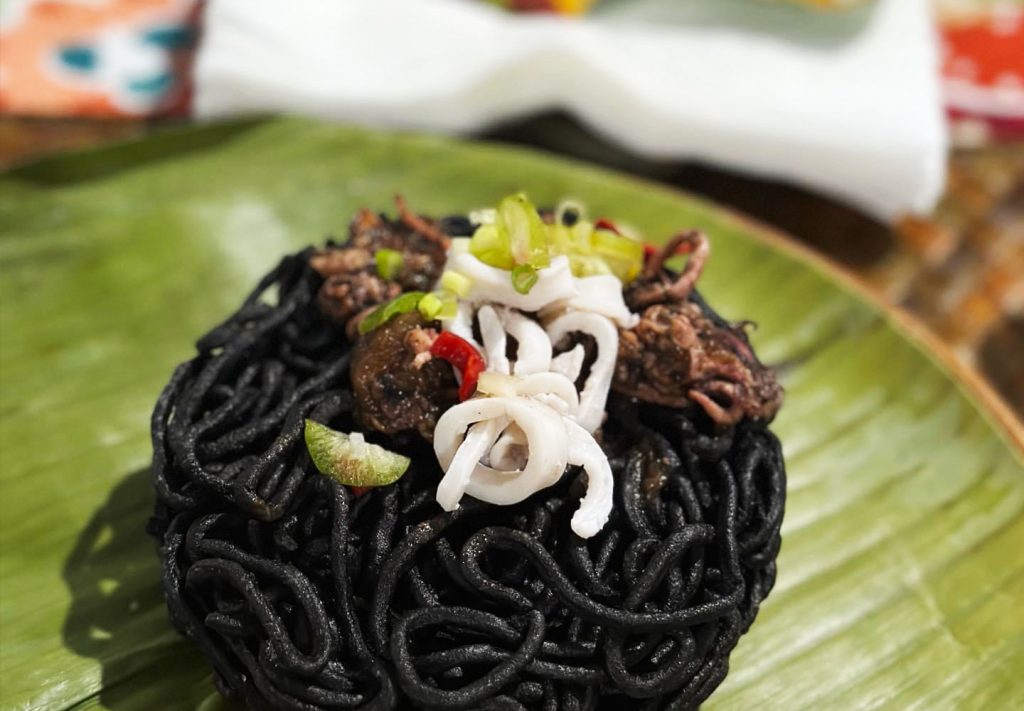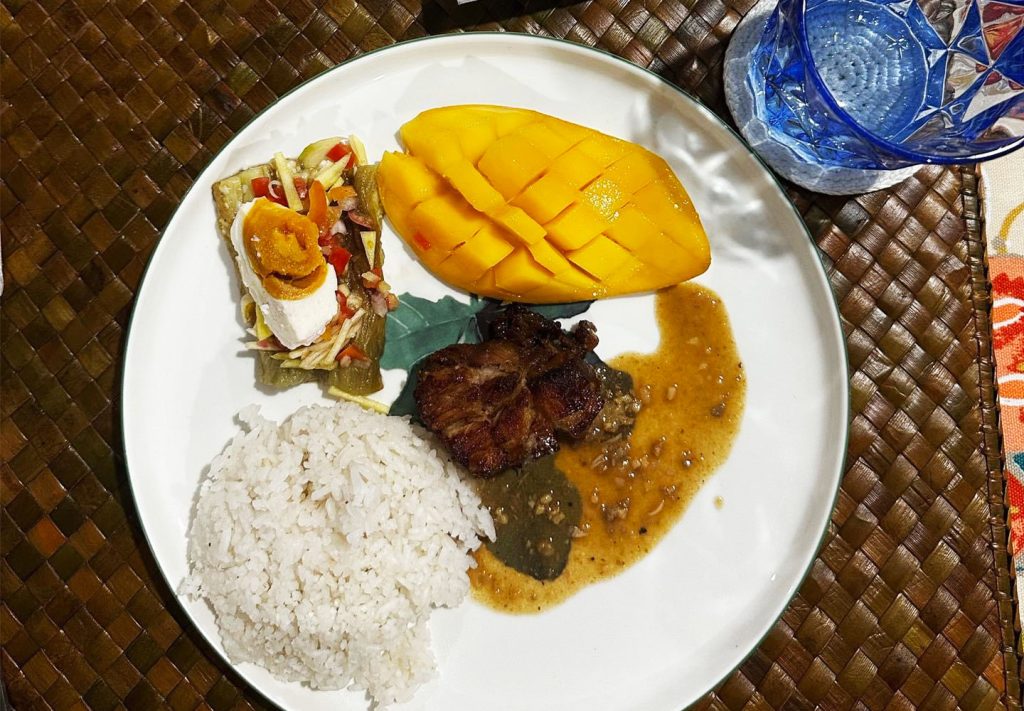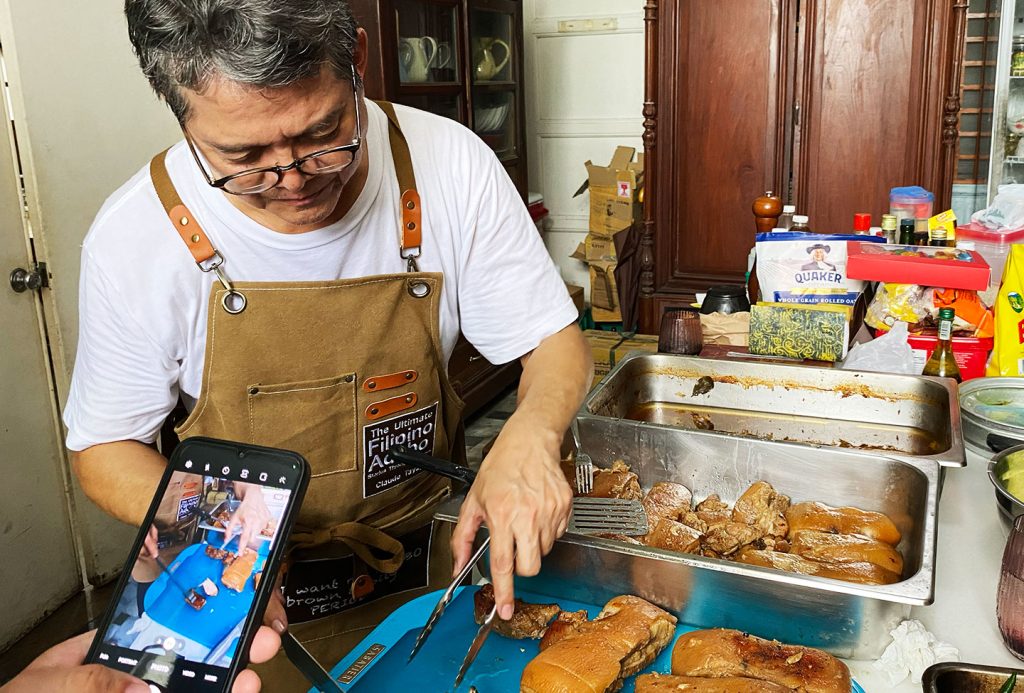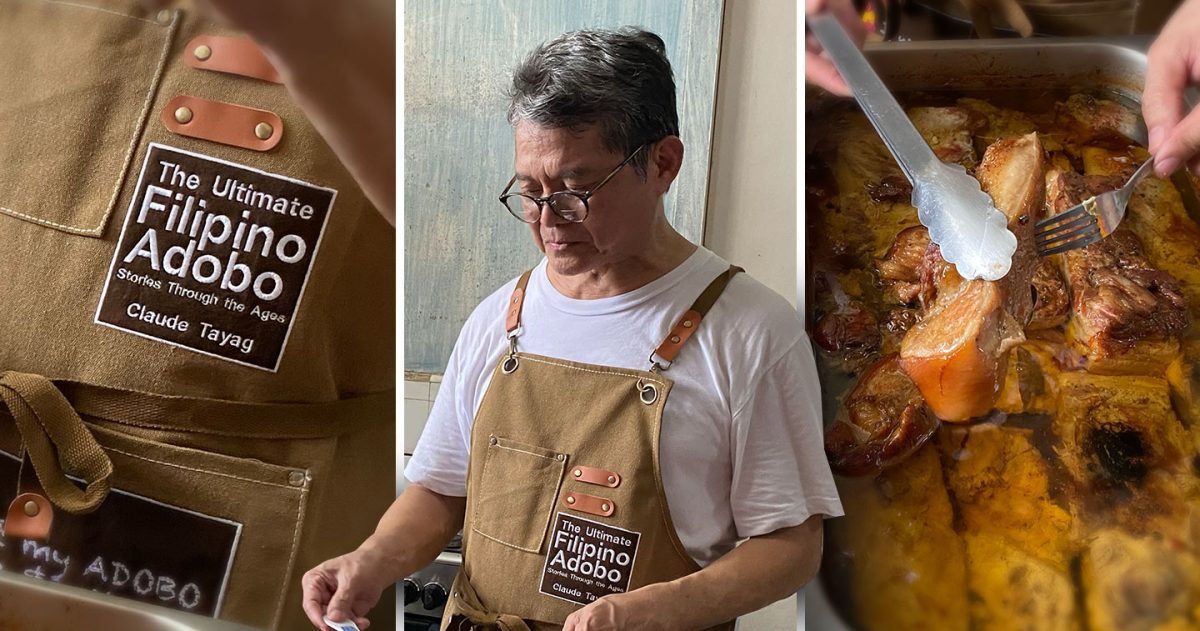SILAY CITY, PHILIPPINES — Rule of thumb: If Chef Claude Tayag, the man who introduced sisig to Anthony Bourdain, puts on an apron and invites you to watch him cook his award-winning adobo, you don’t say no.
Last November 04, the 2023 Adobo Festival came alive at Casa A. Gamboa as Chef Claude took center stage to showcase the versatility and creativity inherent in Filipino cooking. Adobo Magazine had the unique opportunity to take a behind-the-scenes look as he invited us to observe him prep and cook ahead of his dinner event, graciously walking us through the history and each step.
Chef Claude presented two dishes from his celebrated book, The Ultimate Filipino Adobo Stories Through the Ages, which provides a comprehensive exploration of the time-honored Filipino culinary gem — from its history to cultural significance and regional variations.
The first dish was Chef Claude’s rendition of Adobong Pusit. While he initially planned on sticking to the book’s recipe by pairing the squid dish with sotanghon noodles, he fortuitously discovered squid ink pasta from Negros Occidental. To our pleasant surprise, these noodles had a deep flavor and satisfying crunch which complimented the savory squid adobo.


With this simple yet ingenious substitution, Chef Claude exemplified how the Filipino culinary spirit thrives on innovation and adaptability. He said, “This should demonstrate the endless possibilities of our cooking. There are no fixed rules.”
After talking about adobo in the Filipino context some more, we moved on to the second course — the Pork Belly Adobo Confit. This was the dish Chef Claude presented during his talk at the first Madrid Fusion in Manila in 2015, and which he later served in his restaurant, Downtown 1956 Cafe, in Pampanga.
While frying the portions with a little of its fat, he said, “It was the pork fat that sustained Filipinos.”
Delving into our past, he explained that pork fat, rendered from the pig raised in the backyard, was a vital source of sustenance for Filipinos in good and bad weather alike. The backyard pig, fed with table scraps and leftover food, eliminated the need for trips to the market.
Whether intentional or not, the dish was a reminder of the resourcefulness and sustainability ingrained in Filipino culinary practices.


After the brief history lesson, it was time to try the Pork Belly Adobo Confit. It was rich and savory, as you expect the traditional adobo to be. The pork belly was extremely tender with a melt-in-your-mouth texture as a result of the confit preparation. The dish was accompanied by a ripe mango and tomato relish, placed over a grilled eggplant. This followed the tradition of grandparents eating adobo with a sweet ripe mango or banana, with either tomato or salted duck egg as a counterpoint to the savory dish.
Several hours later, Chef Claude addressed his eager dinner guests. Introducing his two dishes, he said, “Adobo is not a recipe. It’s in our hearts — a feeling, a memory.”
The Adobo Festival, organized by the Negros Cultural Foundation, began in 1998 and has become an annual event that celebrates the rich and diverse flavors of Filipino cuisine, with a special focus on the iconic Filipino adobo.
The festival is a gathering of food enthusiasts, chefs, and culinary experts who come together to showcase various interpretations of adobo and explore the dish’s many regional and creative variations.








